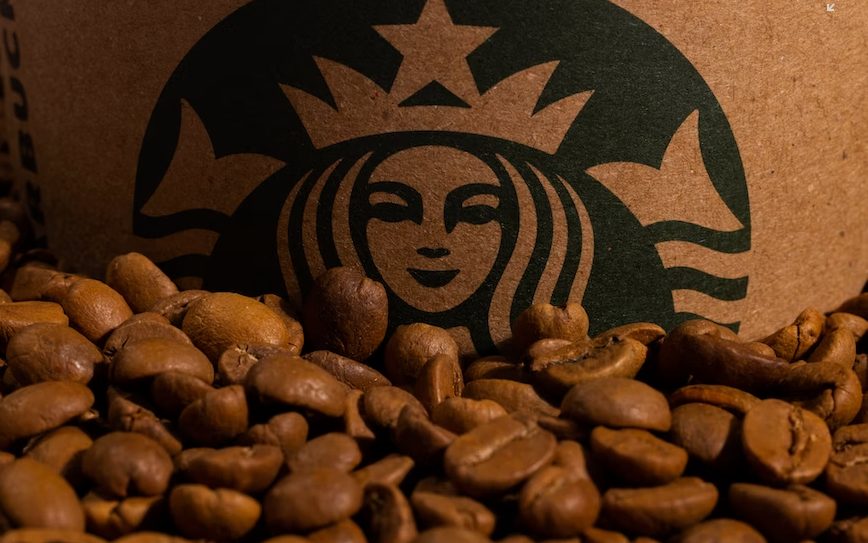Starbucks, a globally renowned name and arguably the most successful coffee company, has been a game changer in the world of gourmet coffee.
The ‘Siren’ logo of Starbucks is a familiar sight in cities around the globe, a symbol of quality coffee, a cozy atmosphere, and a comfortable place to connect. But, like every multinational corporation, Starbucks too began as a small, humble startup. Its journey from a single store in Seattle to an international coffee giant is not just a tale of business expansion; it’s an inspiring narrative of vision, innovation, and perseverance.
Beginnings In Seattle
The inception of Starbucks dates back to 1971, in the heart of Pike Place Market in Seattle, Washington. Three academicians – Jerry Baldwin, an English teacher; Zev Siegel, a history teacher; and Gordon Bowker, a writer; with a shared passion for quality coffee, decided to embark on a business venture. Inspired by the entrepreneurial spirit of Alfred Peet, founder of Peet’s Coffee, the trio opened their first store not as a coffeehouse, but as a local retailer selling high-quality coffee beans and coffee-making equipment.
They named the enterprise ‘Starbucks’ after the chief mate in the book “Moby Dick”, setting the initial tone of the maritime theme. The choice reflected the rich seafaring history of Seattle and their love for the high seas and the exotic. Starbucks’ first logo, the double-tailed mermaid, or ‘Siren’, was emblematic of this aspiration and is still iconic of the brand today, albeit in a more stylized form.
Early Growth And Challenges

The early days of Starbucks were marked by an unwavering commitment to quality. The founders were meticulous in sourcing their beans from Peet’s before eventually deciding to buy directly from growers. This dedication to quality, coupled with an enthusiastic market, helped Starbucks flourish locally. By 1980, they expanded to five stores, with a small roasting facility, and a wholesale business selling to local restaurants.
However, as with any startup, the path was not entirely smooth. The founders faced numerous challenges, including high operational costs, difficulties in scaling, and problems associated with maintaining consistency and quality. Moreover, in those early years, the idea of spending on ‘expensive’ coffee was still foreign to many Americans. Nevertheless, the founders stayed committed to their vision of introducing premium coffee to a wider market.
Enter Howard Schultz
The pivotal point in Starbucks’ history was the entrance of Howard Schultz in 1982. Initially hired as the director of retail operations and marketing, Schultz brought a different perspective to the business.
During a trip to Italy, he was captivated by the cultural significance of espresso bars and coffeehouses in Italian society. He saw potential in this concept far beyond selling coffee beans and equipment; he envisioned a ‘third place’ between home and work, where people could relax, enjoy a cup of coffee, and connect with others.
However, this idea did not sit well with the founders, who wished to stick to their original business model. Schultz, undeterred by the disagreement, decided to leave Starbucks in 1985 to start his own coffeehouse chain, Il Giornale, implementing his vision of the coffeehouse culture.
The Starbucks we know today is a result of this vision, but the road to the global expansion of the brand was only about to begin. Stay tuned to explore how Starbucks transformed into the giant coffee conglomerate, revolutionizing the world’s coffee culture.
A Visionary’s Return And The Pivotal Acquisition

While Howard Schultz’s concept of a coffeehouse culture was blossoming at Il Giornale, Starbucks was facing financial struggles, pushing the founders to sell the business. In 1987, Schultz seized this opportunity, raising $3.8 million to acquire Starbucks, merging it with Il Giornale, and adopting ‘Starbucks Corporation as the name for all outlets.
Schultz’s Business Plan: The ‘Third Place’
After taking the helm, Schultz immediately started implementing his original vision into Starbucks’ business plan. The primary goal was to transform Starbucks from a retailer into a destination – a ‘third place’ between home and work. Schultz believed that creating an inviting ambiance and experience that went beyond just selling coffee would establish a loyal customer base, and this concept became a key pillar of Starbucks’ business model.
Starbucks stores were designed to be warm and inviting, with comfortable seating, a selection of music, free Wi-Fi, and other amenities to encourage customers to stay longer. Partners, or Starbucks employees, were trained not just to serve coffee but to create a welcoming, personalized experience for every customer. The aim was to create a sense of community and connection, a philosophy that continues to set Starbucks apart from its competitors.
Quality And Innovation

In addition to the focus on the coffeehouse atmosphere, Starbucks maintained a rigorous commitment to the quality of its coffee. The company invested heavily in sourcing the best coffee beans and took control over the entire value chain, from sourcing and roasting to brewing and serving, ensuring consistency across all its stores.
Starbucks also distinguished itself through innovation. Their product line extended beyond simple black coffee to include an array of beverages like espressos, lattes, frappuccinos, and seasonal specials. Starbucks introduced the concept of customizable beverages, with numerous choices of syrups, milk, and sizes, that catered to the unique preferences of each customer.
Global Expansion
Once the model proved successful in the U.S., Starbucks turned its gaze overseas. International expansion began in 1996, with a store in Tokyo, Japan, and continued across Asia, Europe, and the rest of the world. Starbucks adjusted its stores and offerings to fit local cultures and tastes, while maintaining its signature standards and atmosphere, demonstrating a balance of global consistency and local relevancy.
Starbucks’ international growth strategy was executed through a mix of company-owned stores and licensed partnerships, depending on the market dynamics and local business practices of each region. This approach allowed Starbucks to maintain a swift yet sustainable pace of expansion, adapting and learning from various cultural contexts along the way.
Conclusion
The journey of Starbucks from a single store in Seattle to a global coffee powerhouse is a testament to visionary leadership, innovation, and an unwavering commitment to quality. The business plan that transformed Starbucks revolved around creating an exceptional experience around coffee, fostering a sense of community, and delivering consistent quality across all outlets worldwide. The brand’s unparalleled success illuminates the power of a customer-centric approach and stands as an inspiring example for startups and businesses around the globe.
Read Also:




























